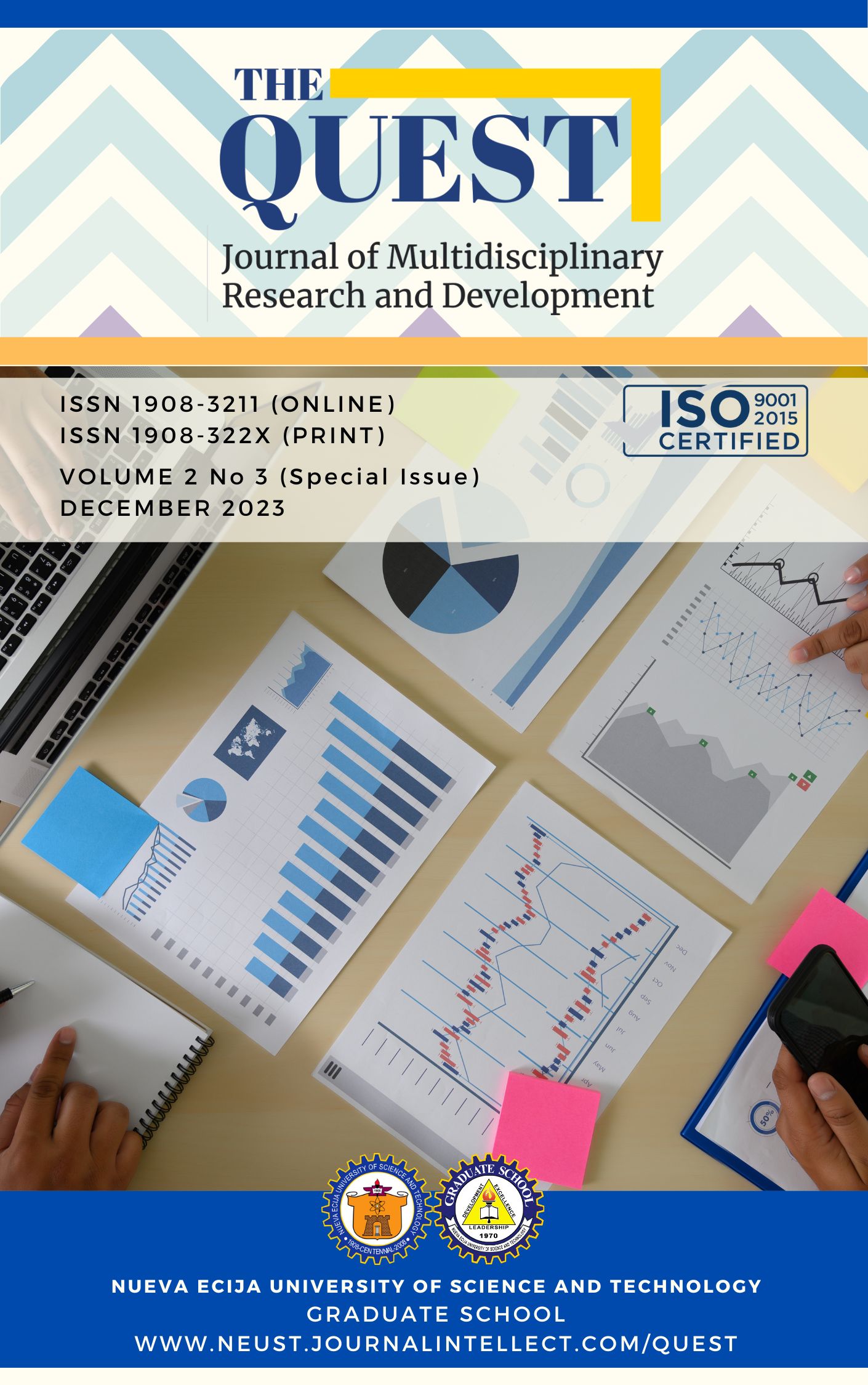Corporate Governance of China’s State-Owned Enterprises: A Review of Past Experiences

Published 12/30/2023
Keywords
- SOE reform,corporate governance,arty organization, board of directors, management,institutional framework, information disclosure, stakeholders
How to Cite
Copyright (c) 2023 The QUEST: Journal of Multidisciplinary Research and Development

This work is licensed under a Creative Commons Attribution-NonCommercial 4.0 International License.
Abstract
This study aimed to evaluate the strengths and weaknesses of corporate governance practices in China's state-owned enterprises (SOEs) based on their current state. The researchers selected 20 SOEs and surveyed 40 respondents to assess five key areas: institutional framework, information disclosure, board and supervisory board responsibility and supervision, legal guarantees for stakeholder interests, and strategic management.
The findings revealed that while the interviewees generally agreed with the current state of SOE corporate governance, there were areas for improvement in all five assessed areas. Environmental, Social, and Governance (ESG) and sustainability issues were the most concerning for the respondents, whereas shareholder relations were of least concern. Regarding the impact on productivity and profitability, the sample companies exhibited average performance, suggesting room for improvement.
The study recommended several optimizations to the corporate governance system, including strengthening the board of directors' authority, establishing information disclosure and stakeholder protection mechanisms, reforming the SOE supervision system, and implementing a mixed ownership structure for SOEs.
References
- Al-Raqqad, H. K., Al-Bourini, E. S., Al Talahin, F. M., & Aranki, R. M. E. (2017). The Impact of School Bullying on Students’ Academic Achievement from Teachers Point of View. International Education Studies, 10, 44-50. https://doi.org/10.5539/ies.v10n6p44
- Asian Development Bank. (2014). Corporate governance of state-owned enterprises: A toolkit. https://www.adb.org/sites/default/files/publication/149111/adbi-wp507.pdf
- Faryadi, Q. (2018). PhD Thesis Writing Process: A Systematic Approach—How to Write Your Introduction. Creative Education, 9, 2534-2545.
- García, S., & Fombona, J. (2015). Approach to the Phenomenon of M-Learning in English Teaching. Digital Education Review, 28, 19-36.
- Hu, A. G. Z. (2000). The role of the government in corporate governance: The case of China’s listed companies. Asia-Pacific Journal of Financial Studies, 29(4), 591–616.
- Ilker Etikan, Sulaiman Abubakar Musa&Rukayya Sunusi Alkassim. (2016). Comparison of Convenience Sampling and Purposive Sampling. American Journal of Theoretical and Applied Statistics. Vol. 5, No. 1, 2016, pp. 1-4. doi: 10.11648/j.ajtas.20160501.11
- Li, K. (2006). The political economy of China’s corporate governance reforms. In G. T. Yeo (Ed.), China’s governance across vertical and horizontal connections (pp. 89–110). Routledge.
- Lin, J. Y., & Ye, Y. (2003). Decentralization and incentives: Chinese-style. World Bank Publications.
- Wong, J. T. (2008). Internal governance of Chinese firms. In Y. Shuang, W. Xianjun, & Z. Peihong (Eds.), China’s emerging financial markets: Challenges and opportunities (pp. 235–257). World Scientific.
